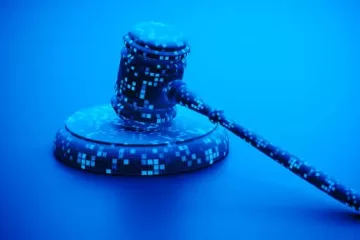
South Africa, already one of the world’s 30 driest nations, is facing a severe and worsening water crisis. While the impacts of climate change and recurring droughts are significant contributors, the situation is exacerbated by outdated infrastructure, poor water management, a growing population, and even the emergence of criminal syndicates known as “water mafias.” For many South Africans, water scarcity has gone from a looming threat to a disruptive daily reality. Just today, for instance, my cousin’s son had to return home from school because there was no water available—a seemingly small event, but one that underscores the larger, systemic crisis affecting millions.
This anecdote, while personal, highlights the far-reaching consequences of the water crisis. When schools are forced to send children home due to a lack of water, it paints a grim picture for the education sector, hygiene, and overall public health. How can students learn and thrive in an environment where access to clean water—essential for basic sanitation—is uncertain? Reports indicate that as many as 25% of South African schools lack a reliable water supply, directly affecting attendance, academic performance, and contributing to unsanitary conditions that pose health risks.
The Root Causes of South Africa’s Water Crisis
The causes of South Africa’s water woes are complex and multifaceted. Climate change is a primary driver, with unpredictable weather patterns, more frequent droughts, and erratic rainfall further stressing the country’s water resources. South Africa’s average annual rainfall of just 450mm is less than half the global average, and projections suggest that this may continue to decline, increasing pressure on already limited water supplies.
Yet, the crisis is not only about changing weather patterns. South Africa’s water infrastructure is crumbling, a legacy of decades of underinvestment and neglect. Many of the country’s pipes and water systems are outdated and prone to leaks, leading to significant water losses. In some areas, over 40% of water from reservoirs is lost before it even reaches consumers. Water treatment plants are often in disrepair, and distribution networks are increasingly unreliable, resulting in service disruptions across urban and rural areas.
The rapidly growing population, particularly in informal settlements and urban centers, further exacerbates the crisis. With more people relying on an already strained system, unplanned water demands and illegal connections to municipal supplies are becoming common. This puts an enormous strain on local resources and further drives up costs for everyone.
Pollution, Corruption, and the Rise of Water Mafias
Adding another layer of complexity is the rising issue of water contamination. Industrial runoff, agricultural chemicals, and untreated domestic waste have severely polluted many of the country’s water sources. This contamination not only reduces the amount of clean water available but also makes it more expensive and time-consuming to treat, further draining resources.
Perhaps even more troubling is the rise of “water mafias”—criminal syndicates who exploit corruption and the frailties in South Africa’s water infrastructure. These groups reportedly manipulate local water supplies, disrupt access, and profit from inflated prices for water tankers, further complicating an already dire situation.
Far-Reaching Consequences
The consequences of South Africa’s water crisis extend far beyond daily inconveniences. Water scarcity threatens public health by increasing the prevalence of waterborne diseases, especially in underserved communities. With fewer resources available for agriculture, crop yields are declining, placing a strain on food security. The country’s agricultural sector, which contributes significantly to the economy, is being jeopardized by water shortages, making it harder to sustain production. Industries reliant on water are facing operational disruptions and higher costs, while the tourism sector—another vital industry—is also suffering from the scarcity.
But perhaps the most heartbreaking impact of the water crisis is on the country’s youth. Children who are sent home from school due to the lack of water face an uncertain future in terms of education, health, and opportunity. The crisis is a clear threat to social equity, as it disproportionately affects those already marginalized by poverty, poor infrastructure, and geographic location.
A Path Forward: Solutions and Strategies
While the outlook is undeniably bleak, there are steps being taken to address the crisis, though much more is needed. First and foremost, South Africa must invest in modernizing and expanding its water infrastructure. Fixing leaks, upgrading pipes, and improving the efficiency of treatment plants are critical to reduce water losses and ensure equitable distribution.
Public awareness campaigns aimed at promoting water conservation and encouraging the adoption of water-saving technologies are essential. Providing incentives for industries and households to adopt water-efficient practices could also help mitigate the demand on dwindling supplies.
Exploring alternative sources of water, such as desalination, wastewater recycling, and groundwater abstraction, could supplement traditional supplies. Implementing smart metering systems could help monitor consumption patterns, detect leaks, and encourage responsible water use among consumers.
A Lived Reality
The case of my cousin’s son being sent home from school due to the lack of water is not an isolated incident—it is a symptom of a far-reaching crisis that impacts millions of South Africans every day. The water shortage is not just an abstract policy issue discussed in boardrooms; it is a tangible reality that affects every aspect of daily life.
Addressing South Africa’s water crisis requires a coordinated, multi-faceted approach that includes investment in infrastructure, policy reforms, better governance, and active participation from local communities. Only with political will, transparent management, and collective action can South Africa hope to secure a sustainable and equitable water future, ensuring that no child will ever again have to leave school because the taps have run dry.

0 Comments